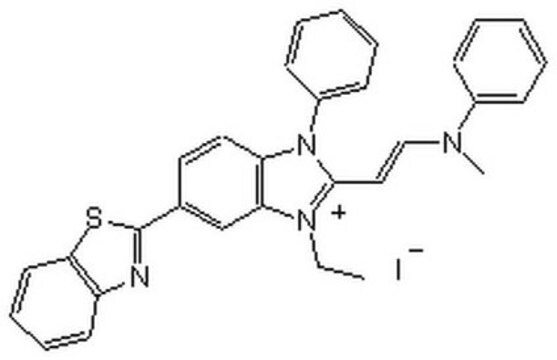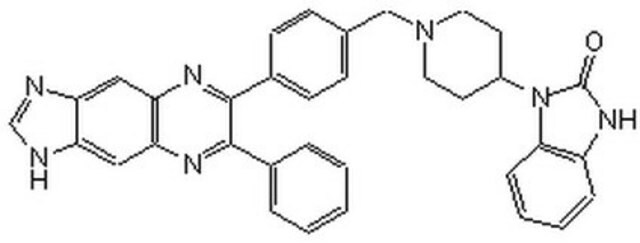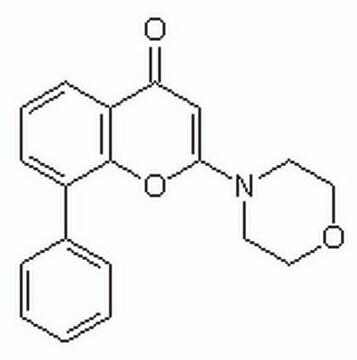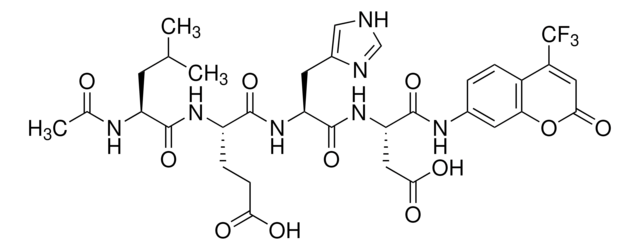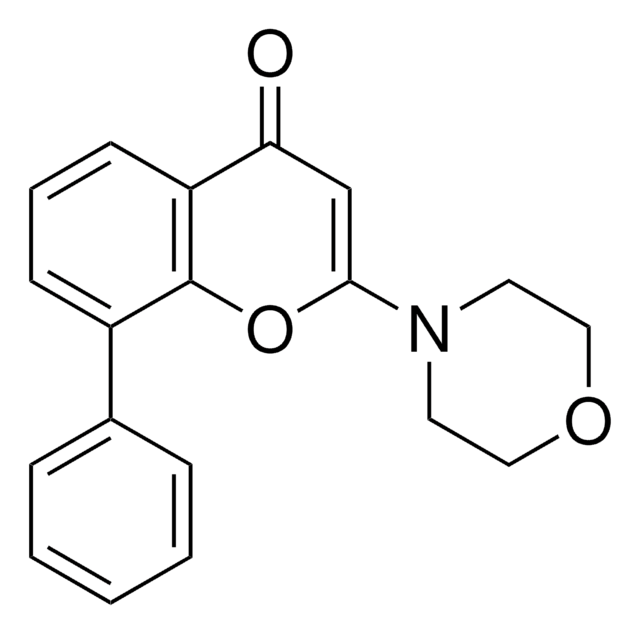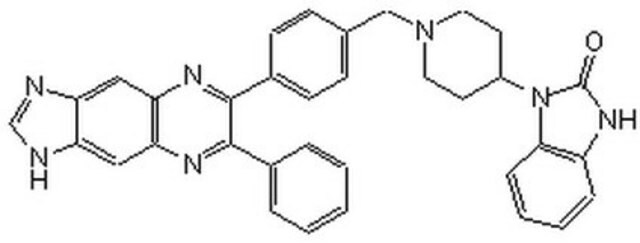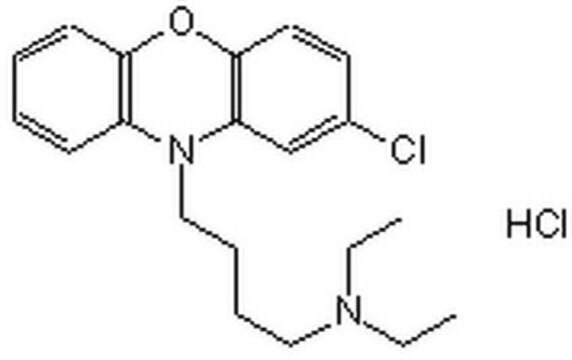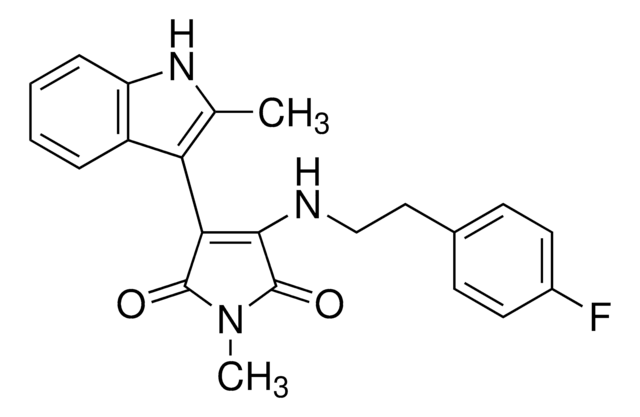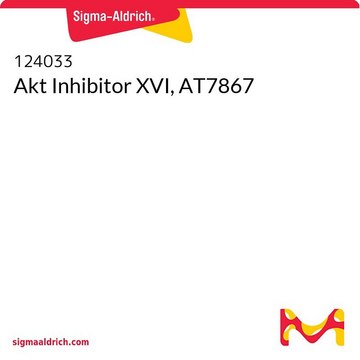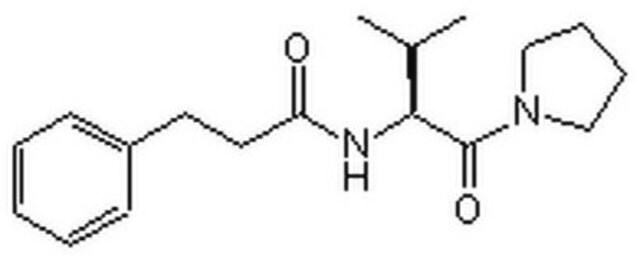A6730
Akt1/2 kinase inhibitor
≥98% (HPLC)
Sinónimos:
1,3-Dihydro-1-(1-((4-(6-phenyl-1H-imidazo[4,5-g]quinoxalin-7-yl)phenyl)methyl)-4-piperidinyl)-2H-benzimidazol-2-one trifluoroacetate salt hydrate, Akt Inhibitor VIII trifluoroacetate salt hydrate, Akti-1/2 trifluoroacetate salt hydrate
About This Item
Productos recomendados
Nivel de calidad
Ensayo
≥98% (HPLC)
Formulario
powder
color
yellow
solubilidad
DMSO: ≥10 mg/mL
emisor
Merck & Co., Inc., Kenilworth, NJ, U.S.
temp. de almacenamiento
2-8°C
cadena SMILES
[H]O[H].OC(=O)C(F)(F)F.O=C1Nc2ccccc2N1C3CCN(CC3)Cc4ccc(cc4)-c5nc6cc7nc[nH]c7cc6nc5-c8ccccc8
InChI
1S/C34H29N7O.C2HF3O2.H2O/c42-34-39-26-8-4-5-9-31(26)41(34)25-14-16-40(17-15-25)20-22-10-12-24(13-11-22)33-32(23-6-2-1-3-7-23)37-29-18-27-28(36-21-35-27)19-30(29)38-33;3-2(4,5)1(6)7;/h1-13,18-19,21,25H,14-17,20H2,(H,35,36)(H,39,42);(H,6,7);1H2
Clave InChI
CRRPFKCJZALCLQ-UHFFFAOYSA-N
Aplicación
Acciones bioquímicas o fisiológicas
Características y beneficios
Código de clase de almacenamiento
11 - Combustible Solids
Clase de riesgo para el agua (WGK)
WGK 3
Punto de inflamabilidad (°F)
Not applicable
Punto de inflamabilidad (°C)
Not applicable
Elija entre una de las versiones más recientes:
¿Ya tiene este producto?
Encuentre la documentación para los productos que ha comprado recientemente en la Biblioteca de documentos.
Los clientes también vieron
Artículos
We present an article about how proliferating cells require the biosynthesis of structural components for biomass production and for genomic replication.
Protocolos
Sigma-Aldrich offers many products related to PKB/Akt for your research needs.
Nuestro equipo de científicos tiene experiencia en todas las áreas de investigación: Ciencias de la vida, Ciencia de los materiales, Síntesis química, Cromatografía, Analítica y muchas otras.
Póngase en contacto con el Servicio técnico